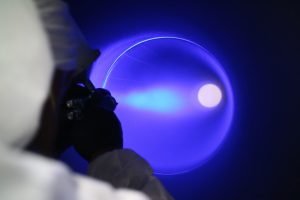Corrosion in the energy industry leads to significant maintenance costs and operational inefficiencies. Recent advancements in nanocomposite technology, such as superhydrophobic coatings and Oceanit’s DragX, offer promising solutions for improving pipeline performance and preventing corrosion. Saudi Arabian researchers Aisha H. Al-Moubaraki and Ime Bassey Obot have emphasized the importance of these innovations in addressing the critical issue of refinery corrosion.
Understanding Refinery Corrosion
High pressure and high temperatures in refineries worldwide create a high risk of corrosion, leading to costly repairs, plant downtime, and serious environmental and safety hazards. Al-Moubaraki and Obot have dedicated their research to addressing these challenges, highlighting the need for sustainable corrosion inhibitors and advanced coating solutions to mitigate these risks.
Refineries are complex operations that handle aggressive substances, making them vulnerable to various types of corrosion. This not only impacts operational efficiency but also poses significant safety risks. The researchers point out that corrosion can cause catastrophic failures, as seen in incidents like the Silver Eagle Refinery explosion in Utah and the Chevron Richmond Refinery fire in California.
Nanocomposite Technology: A Game Changer
Nanocomposite technology, specifically superhydrophobic coatings, is at the forefront of corrosion prevention. These coatings, characterized by their ability to repel water and other contaminants, offer a robust solution for enhancing pipeline efficiency and protection. Nanomaterials, which are incredibly small yet highly effective, provide superior material and processing properties compared to conventional coatings.
Superhydrophobic coatings mimic natural water-repellent surfaces, such as those found on certain plant leaves, making them an excellent low-cost solution for corrosion and fouling in pipelines. These coatings offer self-cleaning, anti-icing, oil-water separation, and viscous drag reduction, significantly improving pipeline safety and efficiency.
DragX: Advanced Pipeline Coating Technology

Oceanit’s DragX is a revolutionary nanocomposite surface treatment designed to enhance pipeline efficiency and corrosion prevention. Supported by the U.S. Department of Energy (DOE), the National Energy Technology Laboratory (NETL), and the Environmental Protection Agency (EPA), DragX represents a significant leap in pipeline optimization.
DragX offers numerous benefits over traditional pipeline coatings. It is effective at a fraction of the thickness of conventional epoxy coatings while reducing pipe wall drag resistance, preventing corrosion, and minimizing the adhesion and deposition of unwanted debris and impurities. This advanced coating is water and oil-repellant, making it suitable even for corroded, in-service pipelines. The treatment is scalable to any pipe diameter and applicable to long, in-situ pipelines.
Benefits of DragX for the Energy Industry
- Pipeline Efficiency: DragX’s low-friction surface significantly enhances the flow of fluids through pipelines, reducing energy consumption and operational costs.
- Corrosion Prevention: The nanocomposite technology used in DragX offers superior protection against corrosion, extending the lifespan of pipelines and reducing maintenance costs.
- Environmental Compliance: By preventing leaks and minimizing the need for frequent maintenance, DragX helps companies adhere to environmental regulations and promotes sustainable operations.
- Pipeline Safety: Enhanced pipeline protection and reduced risk of corrosion-related failures ensure safer operations and protect workers and the environment.
- Coating Application: DragX can be applied easily and effectively, providing a reliable and durable solution for various pipeline systems in the energy industry.
Overcoming Past Challenges
Traditional pipeline coatings have faced numerous challenges, including short pot life, long curing times, and significant thickness requirements. These issues have made the adoption of in-situ-applied epoxy coatings impractical for many pipelines. DragX addresses these problems by offering strong adhesion and abrasion resistance and no adverse effects on the purity of the transported fluids. It also increases flow capacities at a decreased pressure, even for de-rated pipelines.
Integrating advanced nanocomposite technologies like superhydrophobic coatings and products such as DragX is revolutionizing the industry. As research continues and technologies evolve, the future of pipeline maintenance and protection looks increasingly promising.
Learn more about our nanocomposite surface treatment from our experts.

